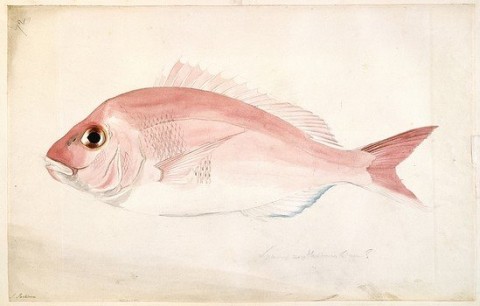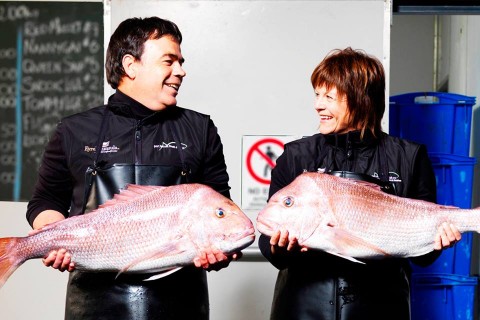The Snapper
Although actually a bream, the common name 'snapper' was given to this fish by Captain James Cook on his voyage through Australia in 1770.
He mistook it for a member of the true snapper family Lutjanidae, a group of fish with which he had become familiar in American waters. Although he mistook the fish, he spelled the name correctly, in South Australia, the Germanic derivation has historically been Schnapper. Snapper is one fish that a lot of fishermen dream about catching.
Photo: Andrew Isles Natural History Books
As with King George Whiting, South Australia and in particular the Eyre Peninsula, has the densest numbers and the biggest size fish, in Australia. Snapper are a schooling fish, and tend to travel in large groups of similar size and age.
Snapper has a pinkish skin with pale blue spots, pale pink with blue tinged fins and a scattering of iridescent bright blue spots on the back and flanks. Most adult fish are this colour as well; but some extremely large solitary specimens may become a fairly uniform dark grey, having lost their iridescent blue sports. The mature fish often have a distinctive forehead hump formed from their foraging for crabs and scallops in the sand.
Photo: https://www.strikehook.com
Juveniles mainly inhabit the inlets, bays and other shallow, sheltered marine waters found throughout the east and west coasts of the Eyre Peninsula, often over mud and sea- grass. Small fish measuring less than 30 cm are common inshore around reef areas often in groups of around 30 individuals. Larger fish are shy and less frequently seen outside of their massive schools which come up the Spencer Gulf in November.The scales of a snapper usually show clear year rings, marking the winter months when body growth almost stops.
In recent times, the use of the Japanese fishing technique known as Ike Jime has been introduced to improve the flesh quality suitable for it's use in sashimi preparations. A number of fishermen from the Eyre Peninsula have mastered this fishing method, where the fish is landed live on a line, brain spiked and gills bled, prior to being immersed in a ice slurry.Although found throughout Australia, the Snapper from the Eyre Peninsula enjoy an abundant diet of prawns, bugs, mussels, scallops, sea urchins and squid- resulting in fat content and flavour unlike snapper found from any other region.
Is regarded as the glamour fish of the salt water fish in South Australia and is an important recreational and comerical Specie.Snapper from the Eyre Peninsula vary in colour from red to golden pink, to light grey on their backs and sides, with numerous iridescent blue spots which are retained longer with the Ike Jime fish.
Information: The SEAFOOD of the Eyre Peninsula- Australia's Seafood Frontier Book
http://seafoodfrontier.com.au/fresh-premium-seafood/







